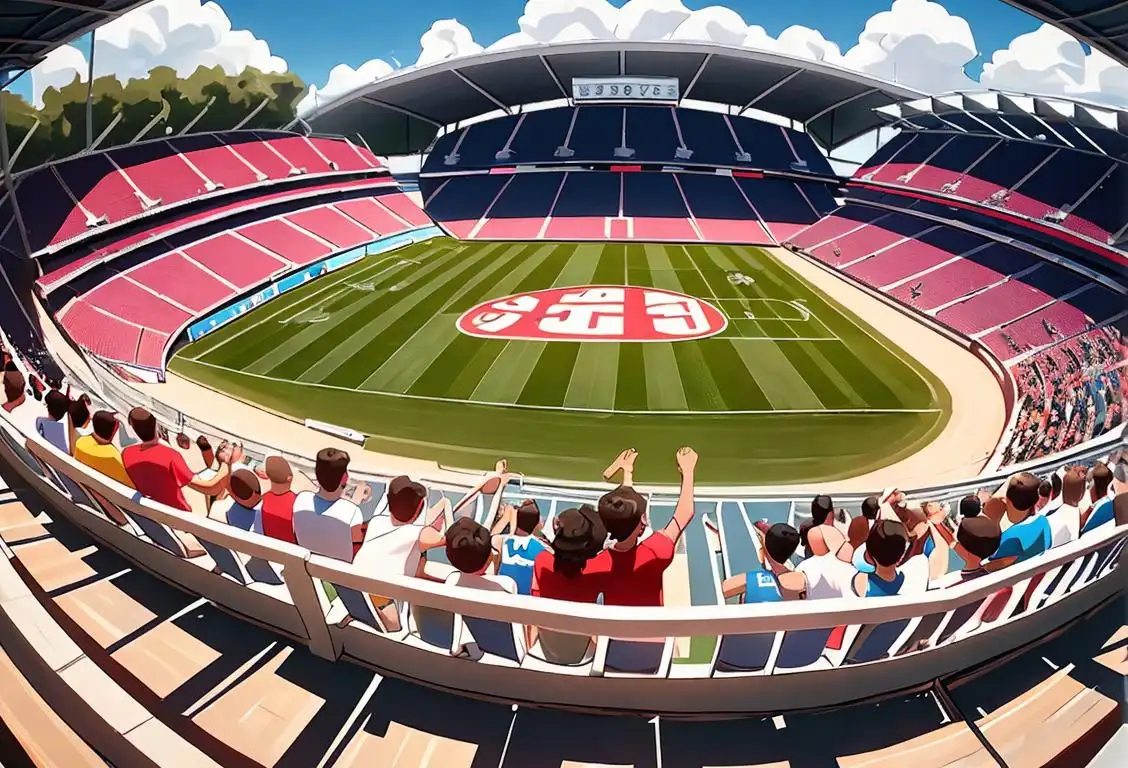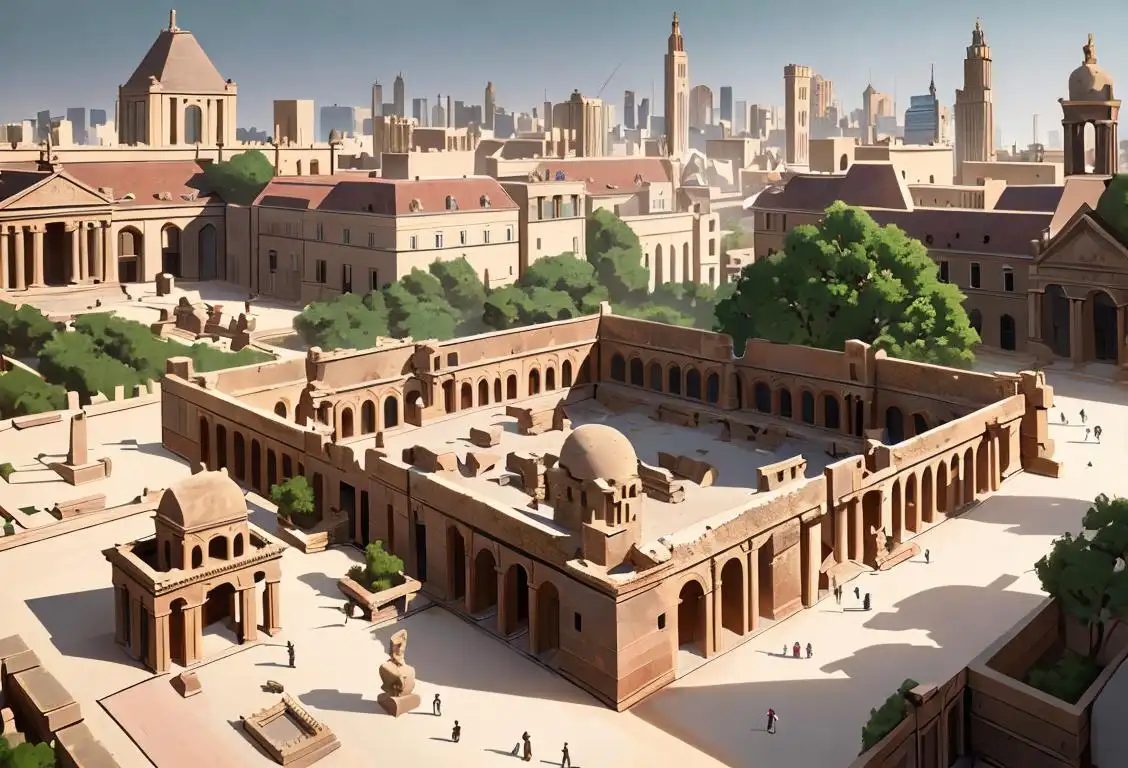National Sports Stadium Day

Welcome to National Sports Stadium Day! Get ready to cheer, munch on some snacks, and witness incredible athleticism. On this day, we celebrate the grand arenas that play host to our favorite sporting events. From roaring crowds to jaw-dropping moments, national sports stadiums are the epicenters of triumph and heart-pounding excitement. So lace up your virtual sneakers, grab a foam finger, and settle in for a thrilling ride!
When is Sports Stadium Day?
It's national sports stadium day on the 26th October.
A Grand Stage for Sporting Legends
When it comes to national sports stadiums, we're talking about more than just four walls and a field. These magnificent structures embody the spirit of sportsmanship, welcoming athletes, fans, and cameramen alike with open arms. From iconic venues like Wembley Stadium in London to the legendary Yankee Stadium in New York City, each stadium has a unique story to tell.
But where did the concept of modern-day sports stadiums even come from? Well, let's take a quick trip back in time. Before the rise of mega stadiums, ancient civilizations like the Greeks and Romans would host their sporting events in grand amphitheatres. These open-air structures became the birthplace of legendary contests such as the Olympic Games.
Fast forward to the present day, and we find ourselves immersed in a world of awe-inspiring sporting arenas. National sports stadiums have become more than just venues; they're symbols of national pride and unity. They bring together people from all walks of life, forging connections over a shared love for the game.
Decked Out in Team Colors
One of the most delightful things about national sports stadium day is the sheer spectacle of it all. From the moment you step foot in the stadium, you'll be surrounded by a sea of colors, flags, and jerseys. Paint your face, wear your lucky socks, and let your true fan spirit shine through! There's something magical about being part of a crowd that's united in their unwavering support for their team.
And let's not forget the food! National sports stadiums are a mecca for delicious snacks and indulgent treats. Hot dogs, nachos, popcorn, and cotton candy are just a few of the mouth-watering options available at the concession stands. So make sure to bring your appetite along for the game!
The Shared Joy of Victory and Defeat
On national sports stadium day, we celebrate not only the triumphs but also the camaraderie that blooms amongst fans. The unpredictable moments, the heartbreaks, and the elation - all of them become shared experiences that weave us together. Whether your team wins or loses, being part of something bigger than ourselves is what truly makes national sports stadium day special.
So, next time you cheer from the bleachers or marvel at a stadium from your living room, remember the significance of national sports stadiums. They are the beating hearts of the sporting world, encapsulating the magic of competition and unity. Happy National Sports Stadium Day! May the roar of the crowd and the thrill of the game always keep you wanting more!
History behind the term 'Sports Stadium'
776 BC
The Ancient Olympics
The term 'sports stadium' can trace its origins back to the ancient Olympic Games in 776 BC. The Olympic Games, held in Olympia, Greece, were a major sporting event in ancient times. The stadium of Olympia was the site where athletes competed in various events, including running, wrestling, and chariot races. This early stadium marked the beginning of organized sports events and the use of specific venues for athletic competitions.
48 BC
The Roman Circus Maximus
During the time of the Roman Empire, the term 'stadium' took on a more recognizable meaning with the construction of the Circus Maximus in 48 BC. This massive stadium in Rome was primarily used for chariot races and could hold over 150,000 spectators. The Circus Maximus set the stage for large-scale sporting events and showcased the grandeur of the Roman Empire.
1864
The Birth of Modern Stadiums
In the 19th century, the concept of 'sports stadium' as we know it today began to take shape. The year 1864 marked a significant milestone with the establishment of the Football Association in England and the codification of modern football rules. As the popularity of sports grew, purpose-built stadiums emerged to accommodate large crowds and provide suitable facilities for players and spectators.
1896
The First Modern Olympic Stadium
With the revival of the Olympic Games in 1896, the term 'sports stadium' gained further prominence. The first modern Olympic stadium was constructed in Athens, Greece, specifically for the 1896 Games. Known as the Panathenaic Stadium, it was modeled after ancient Greek stadiums and could seat approximately 80,000 spectators. This iconic stadium set the standard for future Olympic venues.
20th Century
The Era of Mega-Stadiums
Throughout the 20th century, 'sports stadiums' continued to evolve and grow in size. Major advancements in architecture and engineering allowed for the construction of massive, purpose-built stadiums capable of seating tens, and even hundreds, of thousands of spectators. These mega-stadiums became cultural landmarks and hosted a wide range of sports events, including football, baseball, basketball, and more.
Did you know?
Did you know that the largest stadium in the world is the Rungrado 1st of May Stadium in Pyongyang, North Korea? With a capacity of 150,000, this colossal stadium is a sight to behold!Tagged
food fun memories sportsFirst identified
26th October 2019Most mentioned on
26th October 2019Total mentions
82Other days
Labor Day
Sports Stadium Day
Trivia Day
Happiness Day
Foundation Day
Drink A Beer Day
Wing Day
Ice Cream Sandwich Day
Nachos Day
Senior Citizens Day








